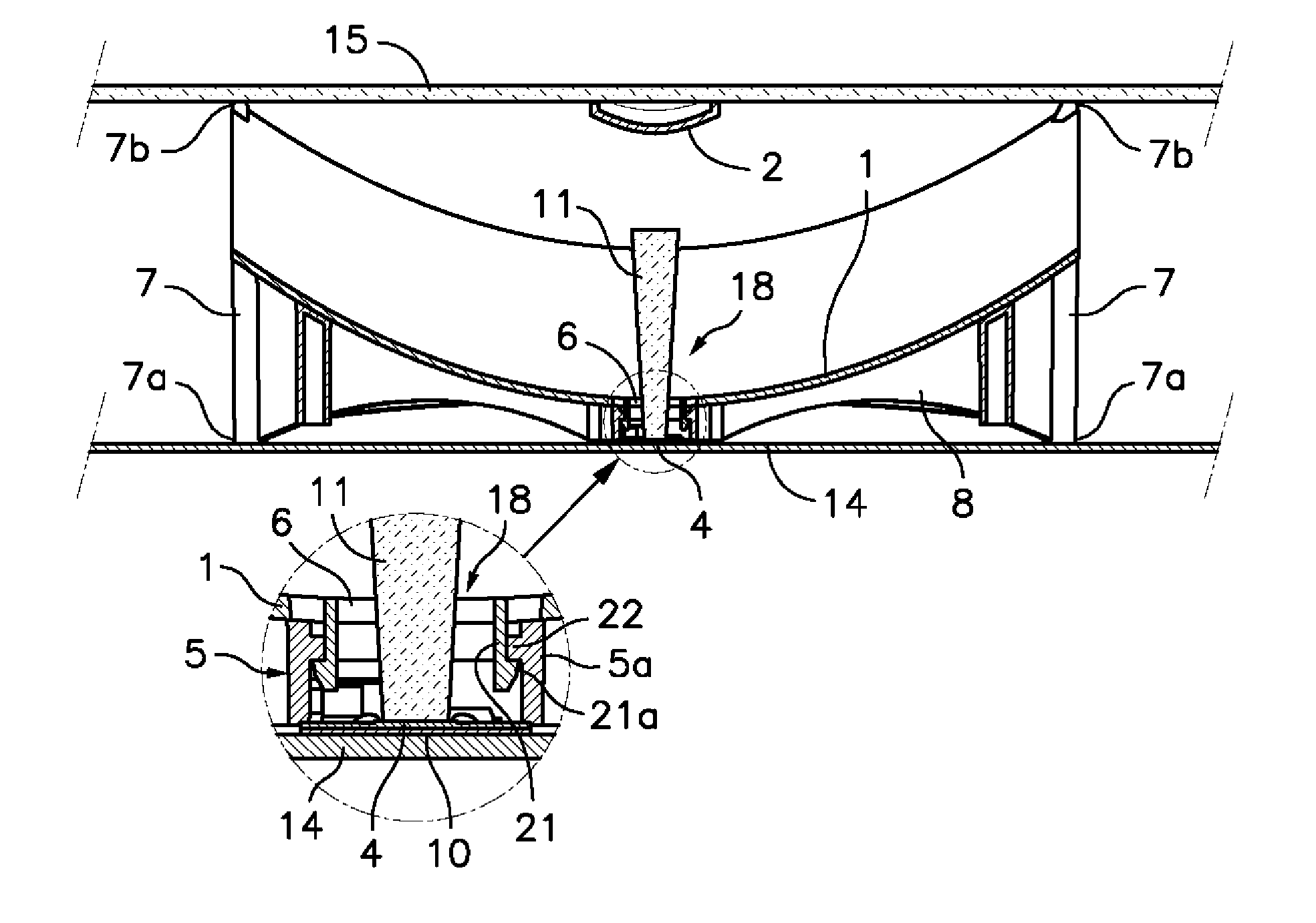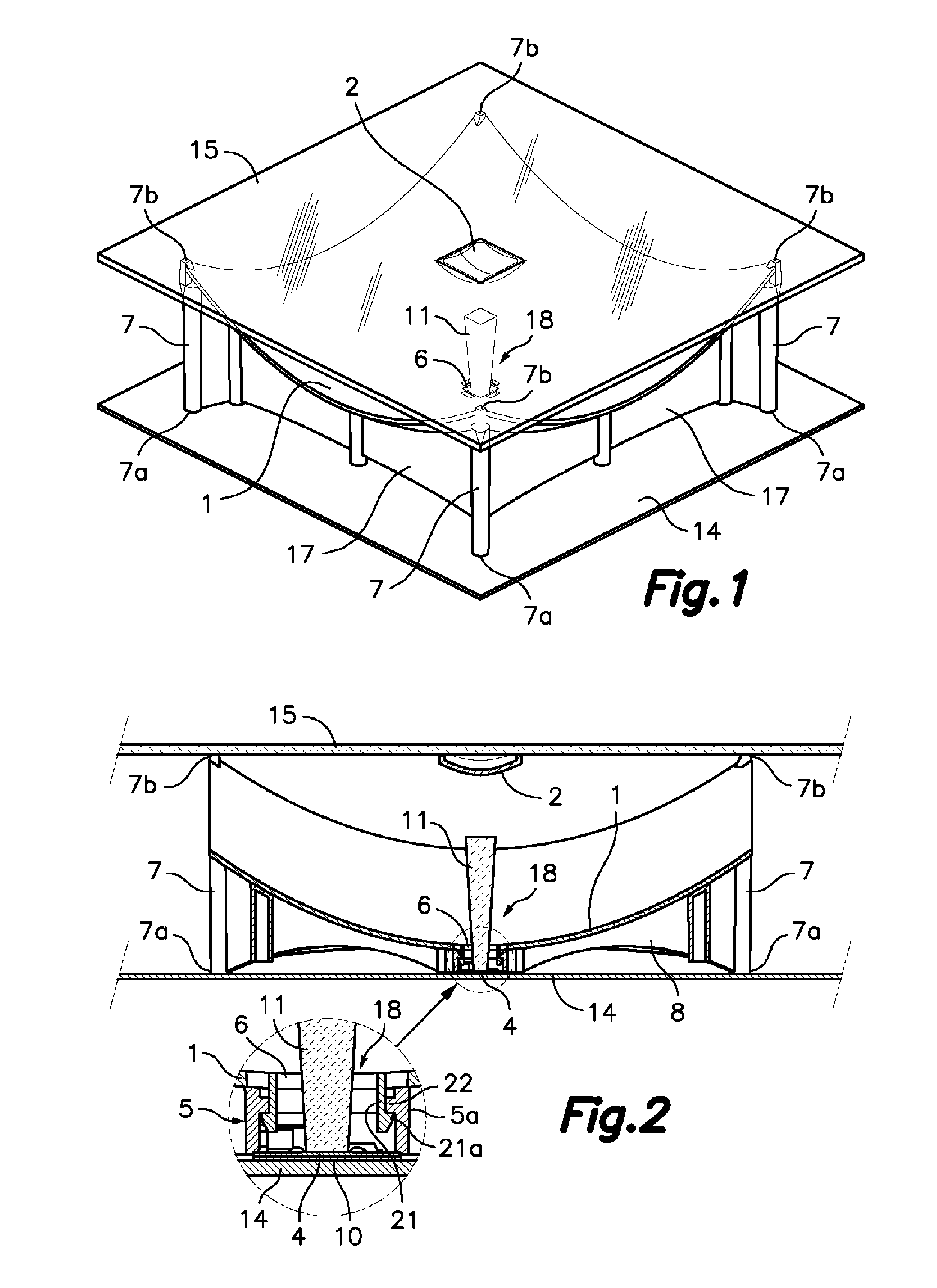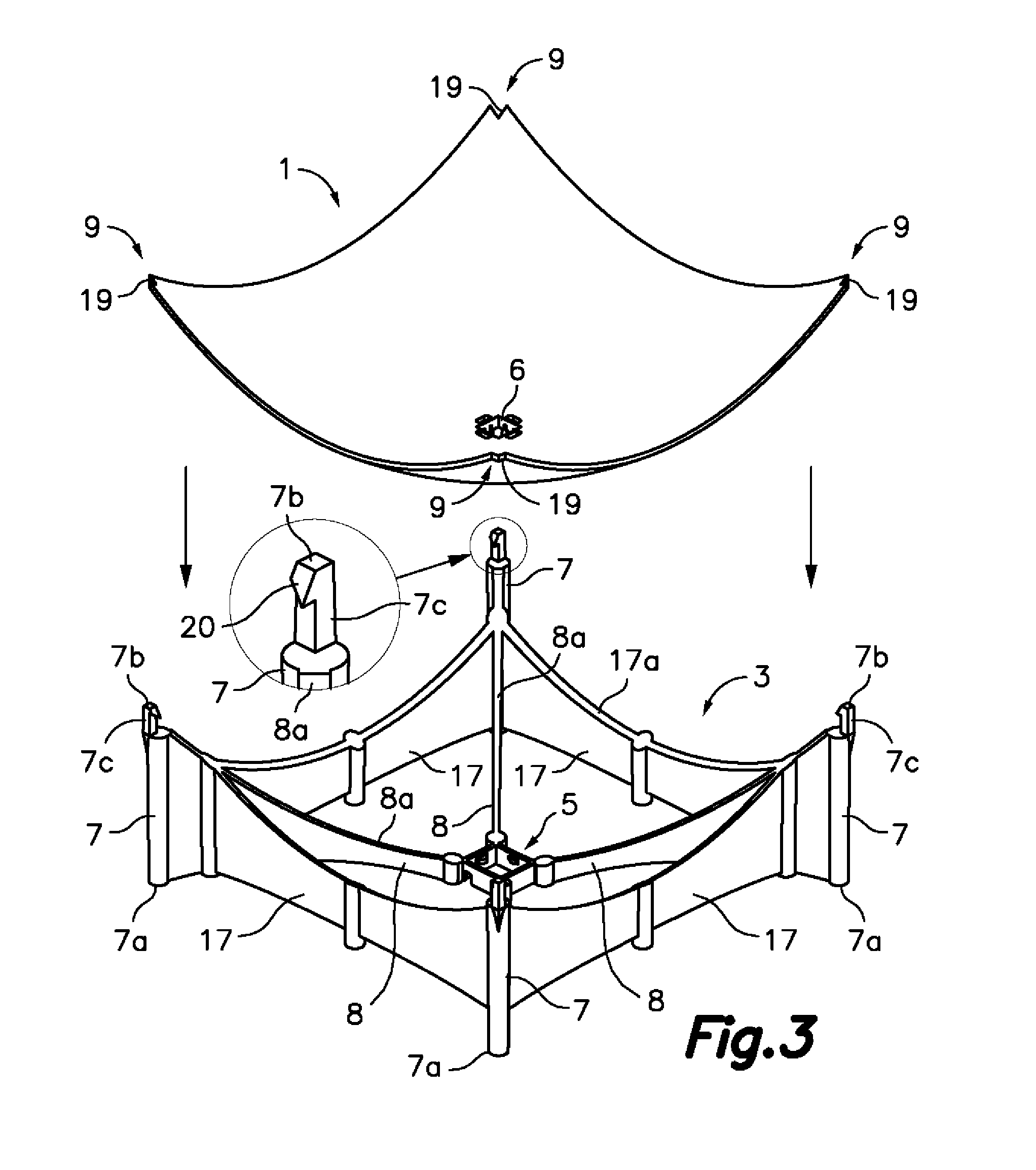Solar-energy collector/concentrator with cassegrain-type optics
a technology of solar energy collector and concentrater, which is applied in the direction of solar-ray concentration, photovoltaics, heat collector mounting/support, etc., can solve the problems of affecting the effect of the cooling device, affecting the cooling effect, and the base cannot guarantee the accuracy, so as to prevent the premature aging reduce the irregularity of the reflective surface, and improve the resistance and stability of the plastic material
- Summary
- Abstract
- Description
- Claims
- Application Information
AI Technical Summary
Benefits of technology
Problems solved by technology
Method used
Image
Examples
Embodiment Construction
[0033]Referring first to FIGS. 1 to 6, there is shown a solar energy collector / concentrator unit with Cassegrain-type optics according to one embodiment of the present invention that comprises a primary concave reflector 1 supported on a base body 3 that leans on a substantially flat supporting surface, provided, for example, by a base panel 14, a secondary convex reflector 2 supported by a substantially flat transparent panel 15 above said primary reflector 1, and a receiver unit 18 arranged below said primary reflector and opposite said secondary reflector 2 through a central opening 6 formed in the primary reflector 1.
[0034]As shown in FIGS. 2, 5A and 5B, said receiver unit 18 comprises a photovoltaic cell 4 mounted, together with electric and electronic components, on a receiver plate 10. The receiver unit 18 also comprises a radiation guide 11 in the shape of a solid frustopyramidal block made of a transparent material, such as, for example, BK7 glass, and it has a base surface...
PUM
 Login to View More
Login to View More Abstract
Description
Claims
Application Information
 Login to View More
Login to View More - R&D
- Intellectual Property
- Life Sciences
- Materials
- Tech Scout
- Unparalleled Data Quality
- Higher Quality Content
- 60% Fewer Hallucinations
Browse by: Latest US Patents, China's latest patents, Technical Efficacy Thesaurus, Application Domain, Technology Topic, Popular Technical Reports.
© 2025 PatSnap. All rights reserved.Legal|Privacy policy|Modern Slavery Act Transparency Statement|Sitemap|About US| Contact US: help@patsnap.com



